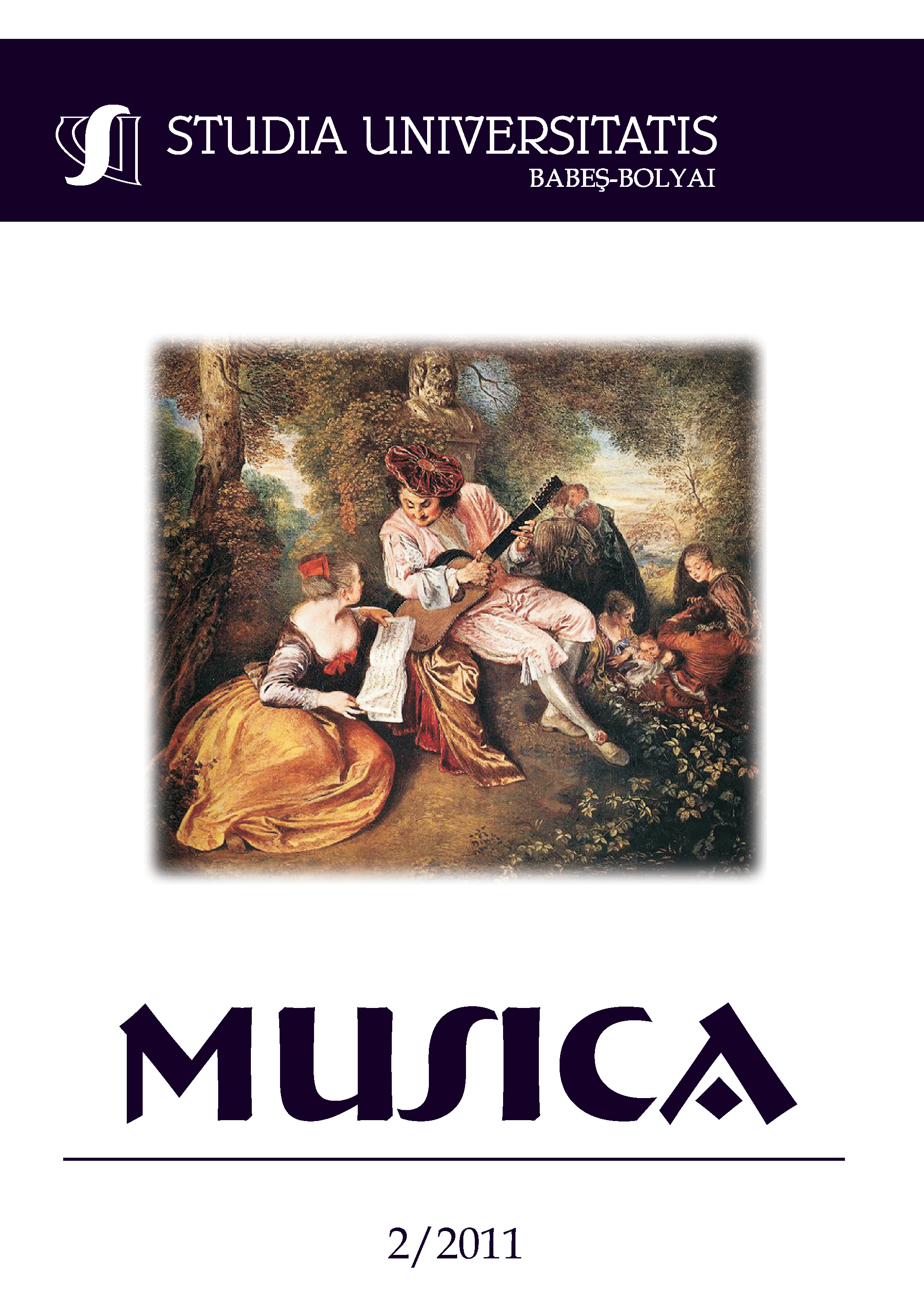THEODOR GRIGORIU’S ORATORIO “CANTI PER EUROPA”
Keywords:
Vocal-symphonic, oratorio, fresco, antagonismAbstract
Theodor Grigoriu’s oratorio Canti per Europa has four parts called frescos, it is based on a libretto containing verses of several poets from various times and spaces and it musically renders the antagonism from the creative and the destructive capacity of Europe. The creative impulse can be found in the image of a huge crater, where Dresden Opera House used to be before being destroyed by the bombings. The methods of analysis – historical, systematical etc. – had their main purpose the enhancing of the complex thorough musical writing.
References
Grigoriu, Theodor, Internet, Bucharest, Editura Muzicală, n.a.
Grigoriu, Theodor, Muzica şi nimbul poeziei (Music and the halo of poetry), Bucharest, Editura Muzicală, 1986.
Hoffmann, Alfred, Oratoriul „Canti per Europa” (The Oratorio “Canti per Europa”), in: România literară, 15.VI.1978.
Popescu-Deveselu, Vladimir, „Canti per Europa” de Theodor Grigoriu, (The oratorio “Canti per Europa” by Theodor Grigoriu) in: the journal Muzica, no. 7, 1978.
Tomescu, Vasile, L`oratorio „Canti per Europa” par Theodor Grigoriu, in: the journal Muzica, no. 8, 1978.
Downloads
Published
How to Cite
Issue
Section
License
Copyright (c) 2011 Studia Universitatis Babeș-Bolyai Musica

This work is licensed under a Creative Commons Attribution-NonCommercial-NoDerivatives 4.0 International License.



